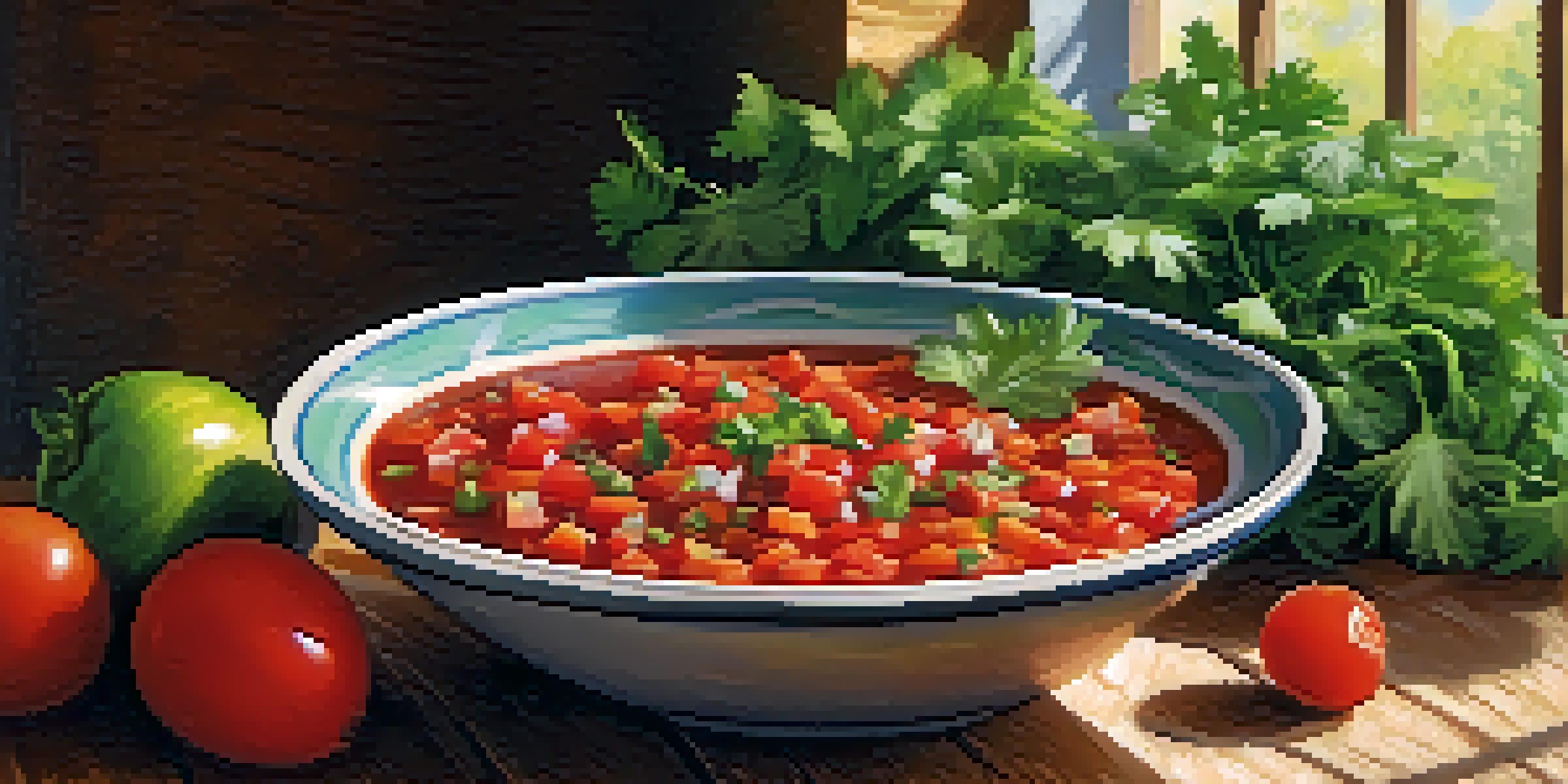Exploring the Versatility of Coriander in Vegan Meals

What is Coriander and Why Use It?
Coriander, also known as cilantro in its fresh form, is a herb that brings a unique flavor to dishes. Its distinct taste can be described as citrusy and slightly peppery, making it a popular choice in various cuisines. Beyond its delightful flavor, coriander is packed with nutrients, including vitamins A, C, and K, which are essential for a balanced diet. For those following a vegan lifestyle, incorporating coriander can enhance both the taste and nutrition of meals.
Coriander's Role in Flavor Profiles
One of the most exciting aspects of coriander is its ability to complement a wide range of flavors. Whether you're whipping up a spicy curry or a refreshing salad, coriander can elevate your dish. For instance, in Mexican cuisine, fresh cilantro is a staple in salsa and guacamole, adding a fresh burst of flavor. Similarly, it works wonders in Thai dishes, where its bright taste balances rich coconut milk and spicy elements.
Coriander Adds Unique Flavor
Coriander offers a citrusy and peppery taste that enhances a variety of dishes across different cuisines.
Using Fresh vs. Dried Coriander
When it comes to cooking with coriander, understanding the difference between fresh and dried forms is crucial. Fresh coriander leaves, or cilantro, offer a vibrant taste that can brighten up any dish. On the other hand, dried coriander seeds have a warm, earthy flavor and are often used in spice blends. Both forms have their unique uses, so experimenting with each can help you find the perfect balance for your vegan recipes.
Coriander in Vegan Soups and Stews
Coriander is a superstar ingredient in vegan soups and stews, providing depth and aroma. Imagine a hearty lentil soup garnished with fresh cilantro—it not only looks appealing but also adds a refreshing contrast to the dish's richness. Additionally, coriander can be blended into the base of a stew, infusing the entire pot with its delightful flavor. This versatility makes it a must-have in your vegan cooking arsenal.
Fresh vs. Dried Coriander Uses
Understanding the differences between fresh cilantro and dried coriander seeds allows for versatile flavor experimentation in cooking.
Enhancing Salads with Coriander
Salads can sometimes feel a bit bland, but adding coriander can change that in an instant. Whether you sprinkle fresh cilantro on top or mix in ground coriander seeds into your dressing, the herb adds a burst of flavor. For example, a simple cucumber salad with cilantro and lime dressing becomes a refreshing dish that stands out. This makes salads not just nutritious but also exciting to eat.
Coriander in Vegan Marinades and Dressings
Marinades are essential for infusing flavor into vegan proteins, and coriander shines in this area. A marinade featuring ground coriander, garlic, and lime juice can transform tofu or tempeh into a flavor-packed dish. Dressings that incorporate fresh coriander can elevate everything from grain bowls to roasted vegetables. The herb's zesty notes can be the difference between a good dish and a great one.
Health Benefits of Coriander
Coriander is rich in antioxidants and anti-inflammatory properties, making it a beneficial addition to a vegan diet.
Coriander's Health Benefits
Beyond its culinary uses, coriander also offers several health benefits. It contains antioxidants, which can help combat oxidative stress in the body. Additionally, coriander is known for its anti-inflammatory properties, making it a great addition to a wellness-focused diet. For those on a vegan journey, incorporating ingredients like coriander not only enhances flavor but also supports overall health.
Coriander: A Versatile Vegan Ingredient
In conclusion, coriander is more than just a garnish; it's a versatile ingredient that can enhance a variety of vegan meals. From soups to salads and marinades, its flavor profile can elevate any dish. Whether you prefer fresh leaves or dried seeds, experimenting with coriander can lead to delicious discoveries in your cooking. So, grab some coriander next time you're at the market and start exploring its potential in your vegan recipes!